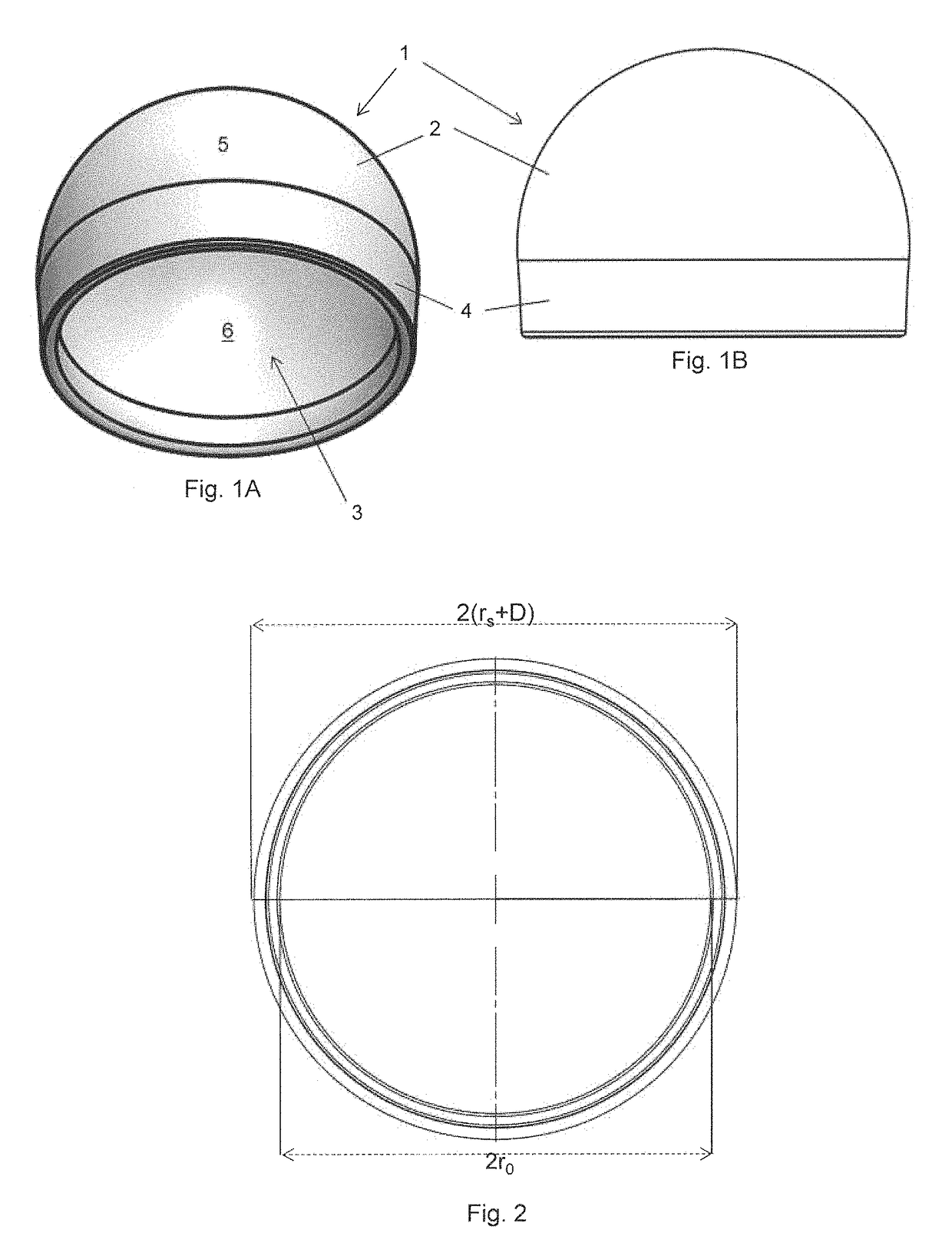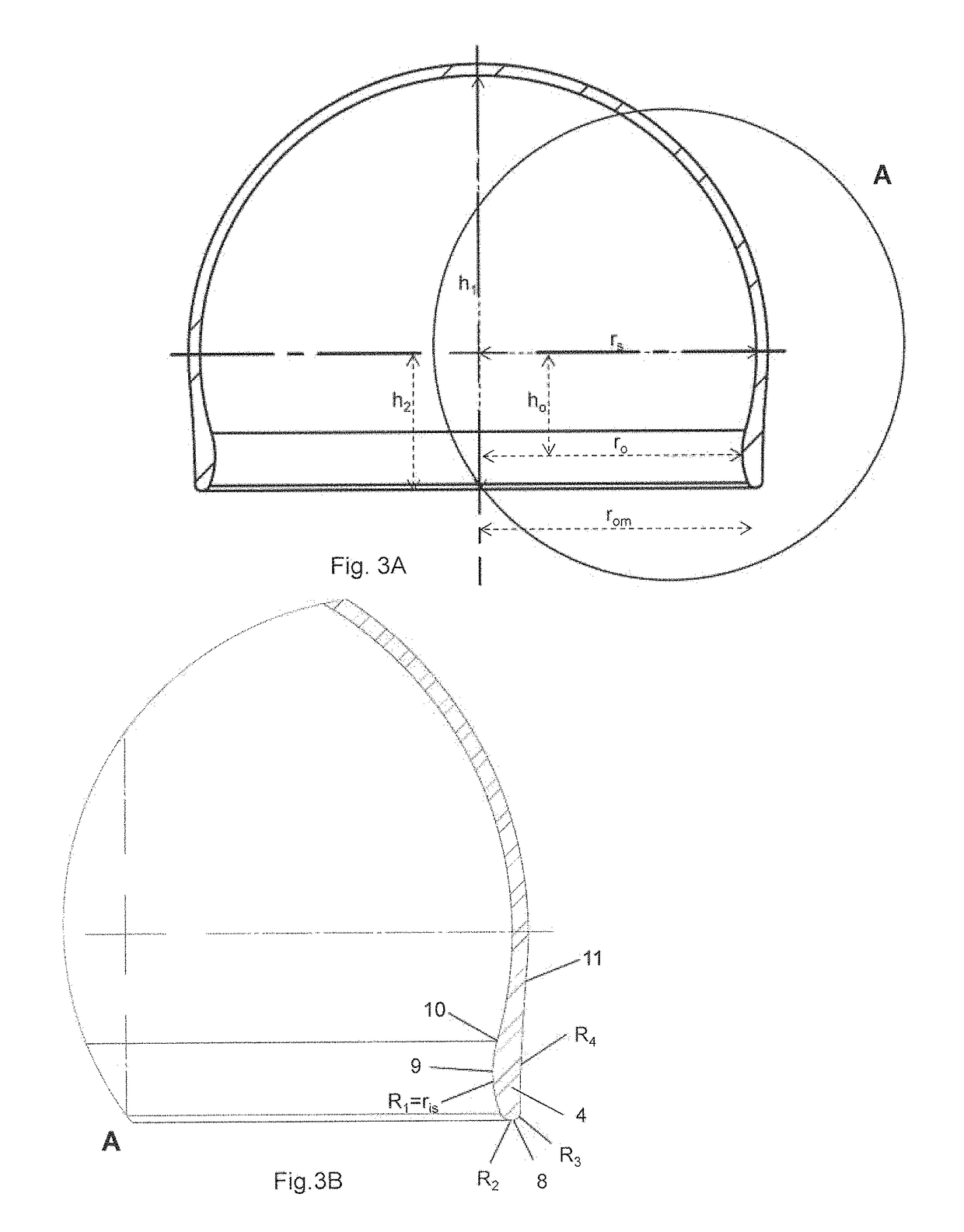Medical implant for reducing pain in diseased joints
a technology for diseased joints and medical implants, applied in the field of medical implants for reducing pain in diseased joints, can solve the problems of inability to meet the needs of patients
- Summary
- Abstract
- Description
- Claims
- Application Information
AI Technical Summary
Benefits of technology
Problems solved by technology
Method used
Image
Examples
Embodiment Construction
[0042]As previously stated the dome is preferably a spherical dome or at least substantially a spherical dome as this shape fits around the natural femoral head and matches the spherical shape of the acetabulum. Further, a spherical curvature may provide a highly stable and stiff structure to at least the upper hemisphere of the shell. In other embodiments the shell can be other shapes, e.g. a more elliptical dome if this is preferred to obtain a better fit around a femoral head with a less rounded shape.
[0043]In one embodiment of the presently disclosed implant the inside surface of the shell is spherical to a first position below the equatorial plane. This first position may be seen as the intersection between a circle and the shell below the equatorial plane. The curvature of the inner surface preferably changes sign at this first position. The inner surface may thus curve in the opposite direction below said first position compared to the curvature of the inner surface above thi...
PUM
 Login to View More
Login to View More Abstract
Description
Claims
Application Information
 Login to View More
Login to View More - R&D
- Intellectual Property
- Life Sciences
- Materials
- Tech Scout
- Unparalleled Data Quality
- Higher Quality Content
- 60% Fewer Hallucinations
Browse by: Latest US Patents, China's latest patents, Technical Efficacy Thesaurus, Application Domain, Technology Topic, Popular Technical Reports.
© 2025 PatSnap. All rights reserved.Legal|Privacy policy|Modern Slavery Act Transparency Statement|Sitemap|About US| Contact US: help@patsnap.com



